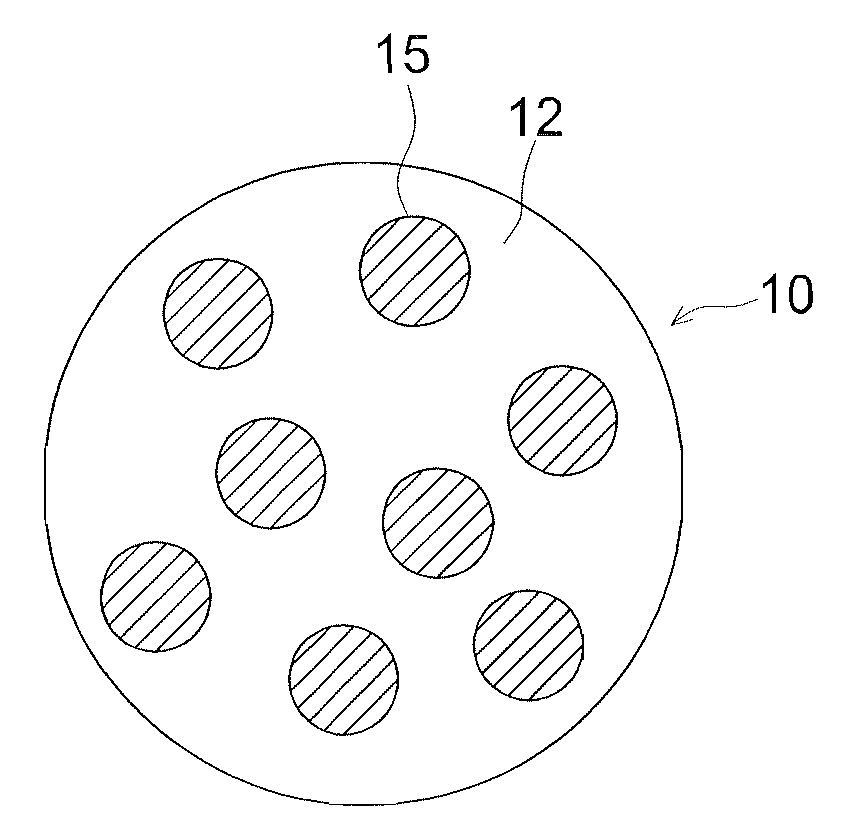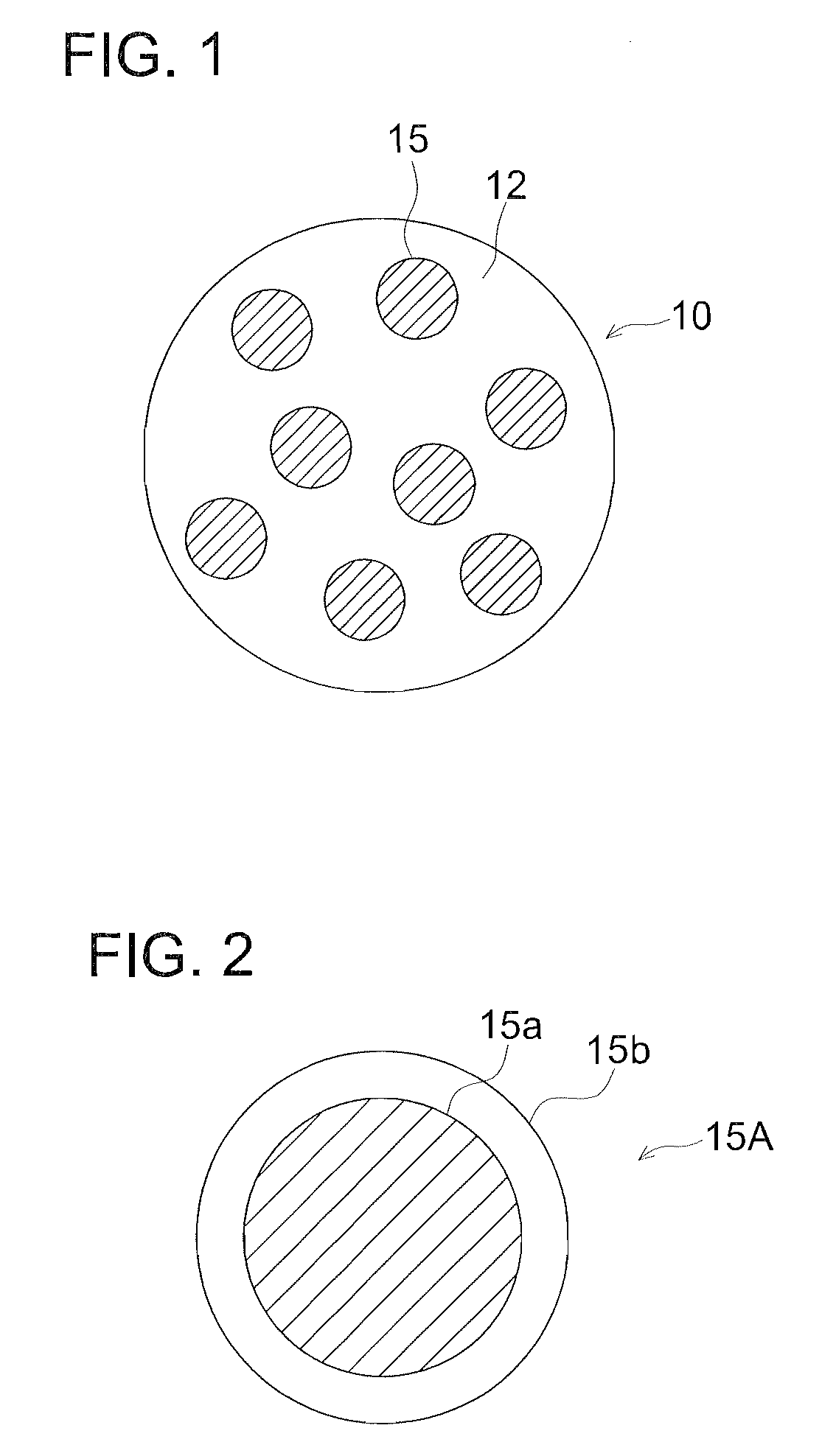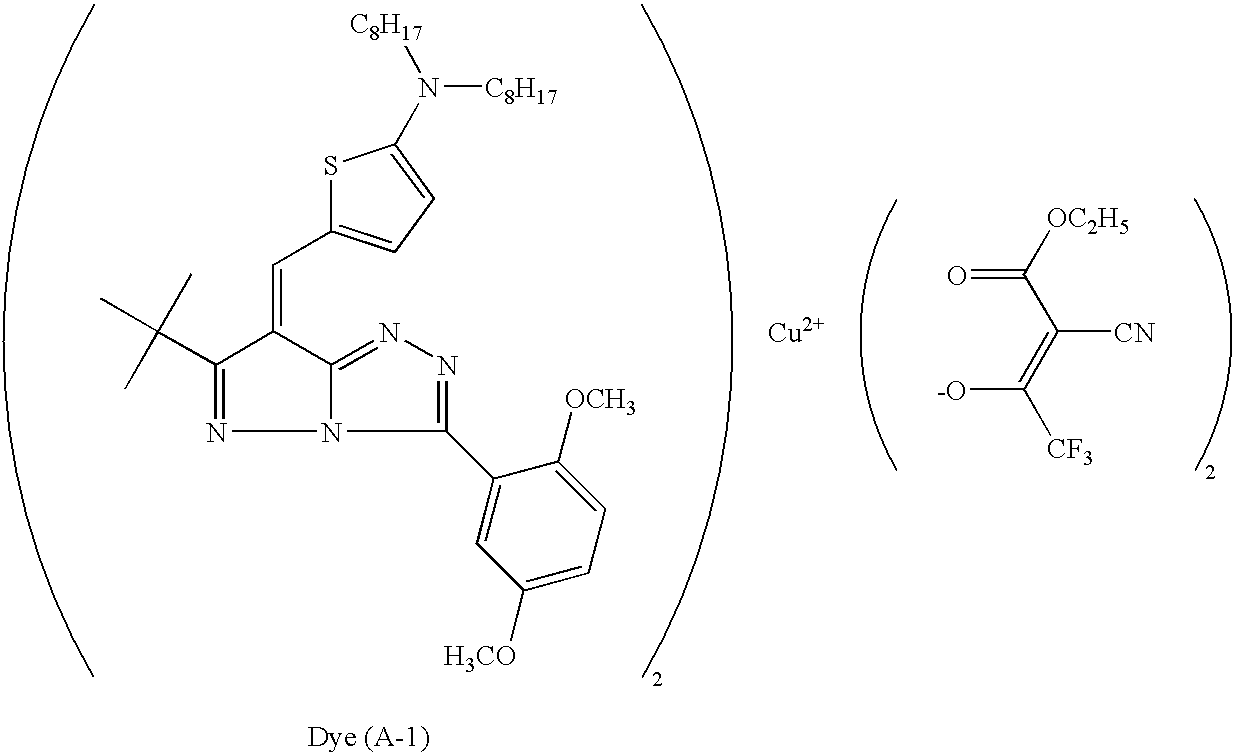Electrostatic image developing toner
a technology of developing toner and electrostatic image, which is applied in the direction of developers, instruments, optics, etc., can solve the problems of low transparency, degradation of image color reproduction, and limited range and chroma of reproducible color, and achieve high offset resistance, excellent color reproduction, and heat resistance high
- Summary
- Abstract
- Description
- Claims
- Application Information
AI Technical Summary
Benefits of technology
Problems solved by technology
Method used
Image
Examples
example
[0138]The embodiment of the present invention is described in terms of examples.
Preparation of Minute Colored Particle Dispersion 1
[0139]To a separable flask were added 13.5 g of polymer (P-1), a 50 / 30 / 20 mixture of methylmethacrylate (MMA) / acetoxyethylmethacrylate (AAEM) / stearylmethacrylate (SMA), 16.0 g of dye (A-1) shown below and 123.5 of acetic acetate and after the atmosphere in interior was replaced with nitrogen gas, the dye was completely dissolved with stirring. Further thereto, 230 g of an aqueous solution 8.0 g of AnrAiON hH-50 (a surfactant, produced by DAI-ICHI hOdvO SEIvAhr CO., iTD.) was dropwise added with stirring and then emulsified for 300 sec. using CiEAR-MIu W-MOTION CiM-0.8W (produced by M-TECHNInrE Co.). Thereafter, acetic acetate was removed under reduced pressure to obtain the minute colored particle dispersion 1 containing a dye. In the thus obtained dispersion, the volume-average particle size of colored particles was 30 nm. Hereinafter, the volume-averag...
preparation example
of Comparative Toner 3
[0159]Toner particles were prepared similarly to the foregoing toner particle 1, except that the minute colored particle dispersion 1 was replaced by the minute colored particle dispersion 8. The thus obtained toner particles wHrH dHsiJnDWHd “CRPSDrDWivH 7RnHr 3”.
[0160]The Comparative Toner 3 contains a dye and an anti-oxidant in the colored particle in a dissolved state.
Measurement of Diameter of Dye Cloud D2
[0161]The average diameter of D2 of the dye cloud of the colored particles was measured for each of the toner samples 1-5 and comparative toner samples 1-5 in such a manner that a toner particle was cut to a thickness of 0.2 μm, employing a microtome. The resulting sample was employed to form a transmission electron microscope image (being a TEM image) at a magnification factor of 100,000, then the arithmetical average value in the Fere direction of 100 dye clouds was designated as the average diameter D2 of the dye cloud.
TABLE 1Minute colored particlesolu...
PUM
 Login to View More
Login to View More Abstract
Description
Claims
Application Information
 Login to View More
Login to View More - R&D
- Intellectual Property
- Life Sciences
- Materials
- Tech Scout
- Unparalleled Data Quality
- Higher Quality Content
- 60% Fewer Hallucinations
Browse by: Latest US Patents, China's latest patents, Technical Efficacy Thesaurus, Application Domain, Technology Topic, Popular Technical Reports.
© 2025 PatSnap. All rights reserved.Legal|Privacy policy|Modern Slavery Act Transparency Statement|Sitemap|About US| Contact US: help@patsnap.com



